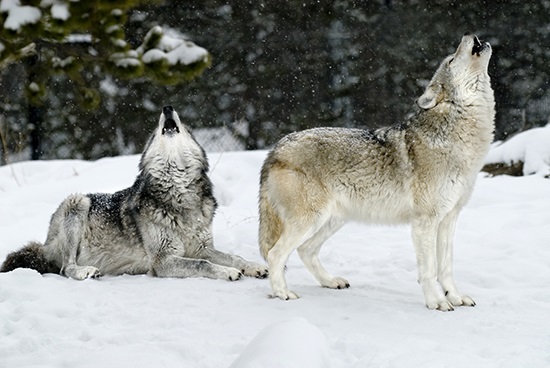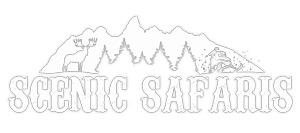QUIZ: What’s NOT Hibernating at Grand Teton?

The majestic landscape isn’t the only reason that nearly five million people visit Grand Teton National Park every year. Along with hiking, wildlife spotting is one of the most popular pastimes on park grounds.
Some travelers bring high-powered camera lenses to capture the animals in their native habitats. Others join wildlife excursions like our Grand Teton Wildlife Luxury Van Tour. This half-day trek from Jackson takes guests along the National Elk Refuge and into Grand Teton National Park, with a focus on wildlife viewing and photography.
If you thought that most of the park’s wildlife is in hiding during the winter, think again. While some animals hibernate for the season, others are out in full force. Take the quiz below to learn more about the winter wildlife inside Grand Teton.
1. Wolves never come out of their dens when it’s below freezing. TRUE or FALSE
2. Grizzly bears hibernate for about _________ months.
a) 2
b) 5
c) 7
d) 9
3. Elk shed their antlers in winter, with regrowth starting in the spring. TRUE or FALSE
4. The park requires guests to stay approximately ________ yards from bears or wolves and _________ yards from other animals.
a) 100, 25
b) 200, 50
c) 20, 10
d) 500, 40
5. When a bear is in hibernation, it does not:
a) Drink
b) Eat
c) Pee
d) All of the above
e) A & B only
6. The following animals at Grand Teton hibernate in winter:
a) Black bears
b) Snakes
c) Skunks
d) Bats
e) All of the above
ANSWERS
1. False
Wolves are relatively active in winter, especially in the early morning and evening hours. Packs are scattered throughout the park, with most animals venturing into lower-lying areas in search of prey. You may even spot a lone wolf looking for food on the Elk Refuge; it’s easier to see the grey of their coats against the blankets of white snow.
2. B
Grizzly and black bears hibernate for approximately 5 months, depending on outside temperatures and snowfall. Both black bears and grizzlies go into hibernation around mid to late November inside Grand Teton and Yellowstone, and generally re-emerge in March or April.
3. False
Mature male elk shed their antlers in spring. Mating season begins in November; males use their antlers to battle with one another during this time, to prove their dominance and attract a partner. When you visit Grand Teton in wintertime, you’ll see male elk at the pinnacle of their glory!
4. A
Park visitors are required to stay a minimum of 100 yards from predators, and 25 yards from other wildlife. This includes vehicles on park roads, and “over-snow” winter vehicles such as snowmobiles.
5. D
When a bear enters a state of hibernation, its body functions slow down. Bears do not eat, drink, or go to the bathroom during this time. Their bodies are made to survive on their existing fat while hibernating. That’s why it is essential for bears inside the park to stock up on natural food sources before the winter.
6. E
Bears aren’t the only animals that hibernate in winter. Skunks, bats, chipmunks, groundhogs and even bees are among the creatures that go into hibernation during the cold months.
With animals on the move looking for food, winter is a great time to visit Grand Teton National Park. On our half-day tour, we’ll take you to some of the best spots in the park for wildlife viewing, passing through the National Elk Refuge and heading down the Gros Ventre Road to Kelly Warm Springs and Shane cabins. Morning and afternoon adventures are available. Call 888-734-8898 or book online today!
